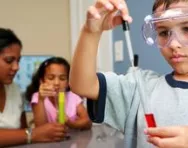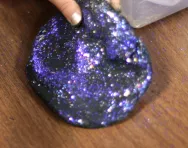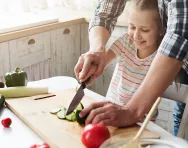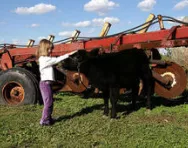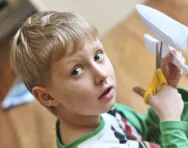Important update from TheSchoolRun
For the past 13 years, TheSchoolRun has been run by a small team of mums working from home, dedicated to providing quality educational resources to primary school parents. Unfortunately, rising supplier costs and falling revenue have made it impossible for us to continue operating, and we’ve had to make the difficult decision to close. The good news: We’ve arranged for another educational provider to take over many of our resources. These will be hosted on a new portal, where the content will be updated and expanded to support your child’s learning.
What this means for subscribers:
- Your subscription is still active, and for now, you can keep using the website as normal — just log in with your usual details to access all our articles and resources*.
- In a few months, all resources will move to the new portal. You’ll continue to have access there until your subscription ends. We’ll send you full details nearer the time.
- As a thank you for your support, we’ll also be sending you 16 primary school eBooks (worth £108.84) to download and keep.
A few changes to be aware of:
- The Learning Journey weekly email has ended, but your child’s plan will still be updated on your dashboard each Monday. Just log in to see the recommended worksheets.
- The 11+ weekly emails have now ended. We sent you all the remaining emails in the series at the end of March — please check your inbox (and spam folder) if you haven’t seen them. You can also follow the full programme here: 11+ Learning Journey.
If you have any questions, please contact us at [email protected]. Thank you for being part of our journey it’s been a privilege to support your family’s learning.
*If you need to reset your password, it will still work as usual. Please check your spam folder if the reset email doesn’t appear in your inbox.
10 messy (but educational!) ideas for kids

1. Painting with water
Learning objective: understanding materials.
This could not be more simple. Pop a waterproof apron on them, set them up outside with a bucket of water and a brush and let them paint your wall, your fence – whatever! (They’ll probably prefer a proper decorator’s painting brush for extra grown-up-ness!) When they’ve had enough, ask them some investigative questions – what happened to the water? How did the colour of what you were painting change?
2. Make a robot
Learning objective: designing and creating an object.
Get them to dig through the recycling to find items to make a robot. Egg boxes, toilet roll tubes and cereal boxes are perfect materials. Invite them to stick the items together to make their model.
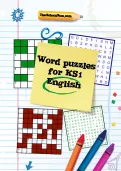

Claim four puzzle packs today!
- KS1 & KS2 Word Puzzle Packs
- Numeracy Puzzle Packs for KS1 & KS2
- Challenging and exciting | Boost key skills
Discuss the four Rs – reduce, reuse, repair, recycle – and how important it is to use things again when we can.
3. Jelly in a fish tank
Learning objective: exploring malleable objects and encouraging letter and number recognition.
In a fish tank, large salad bowl or something similar, make jelly as you normally would. Before setting add in a selection of objects – plastic letters, numbers or toys, for example – then set it in the fridge. Watch them squirm with delight (even if they’re in year 5!) as they put their hands in and search for the objects.
4. Self-portrait galore!
Learning objective: Creating a picture using a variety of art materials.
Children’s self-portraits can make a lovely keepsake to look back on. To start with get them to look at themselves carefully in the mirror (in our experience children quite like doing that!). Encourage them to draw the shape of their face first, then to sketch on their features. Ask: so where are your eyes? Your nose? (And so on.) Then let them complete the picture by painting or colouring in and using wool (for hair) or material scraps (for clothes).
5. Making gloopy slime
Learning objective: understanding how materials change.
Mix up some cornflour and water into a paste. (It has to be cornflour, normal flour doesn’t have the same effect.) Note the change of consistency with your child, and experiment by adding more water or cornflour as needed. Once you’ve formed a lovely ‘gloopy’ paste pour the whole thing onto the kitchen table; they can try writing letters and numbers in it. (You might find it hard to resist having a go yourself!)
6. Paint mixing
Learning objective: understanding colour and building descriptive vocabulary.
Banish any paints that aren’t black, white or a primary colour (red, green and blue). From these your children can make every shade their little hearts desire and it really gets them thinking about the make-up of colour. Encourage them to wax lyrical about the colours they have made and describe them in detail. They might even like to attach a mood to their colour! Can they make a happy colour? A shocked colour? A sad colour?
7. Writing in sand
Learning objective: helping with correct letter formation.
Children learn to write their letters best if they can have a go at writing them really big. Use slightly damp sand in a sand tray or baking tray and help them to write their letters, particularly any they find tricky. Talk through as they write – for example, for ‘d’ say: “down, up, around, up and down”. Spelling it out will help them memorise how each letter is written correctly. This activity is also suitable for older children who need to practise neat cursive writing; you’re never too old for beautiful handwriting!
8. Make bread (and write down the recipe)
Learning objective: understanding how materials change and recording a series of instructions in chronological order.
Making bread is the perfect baking for kids. There are heaps of child-friendly, simple recipes online. Your children are bound to adore kneading the dough – so satisfying! And there are loads of opportunities for learning: discuss how the yeast makes the bread rise, what the heat does, and how we have to leave it to cool. Then ask them to write a recipe card explaining what they’ve done. (In EYFS this can be just pictures.) They’ll be very proud to pass the recipe card onto a grandparent!
9. Water tray fun
Learning objective: experimenting with colour.
Children love playing with water (remember never to leave them unattended, especially if younger siblings are joining in the fun) and it’s a fabulous cooling activity on a hot day. Put them in waterproof aprons – or swimming costumes if really warm – and, alongside them, use food colourings to colour the water. You can also experiment by mixing colours together and seeing what shades you end up with.
10. Play with playdough
Learning objective: using a malleable material to make an object.
Making playdough is easy and cheap – there are loads of recipes but this non-cook one is is ready in minutes.
You’ll need
- 1/2 cup of salt
- 1 tablespoon of vegetable oil
- 1 tablespoon of cream of tartar
- 1 cup of boiling water mixed with some food colouring
Put all the dry ingredients in a bowl and then mix well with the hot water. It’ll be ready to play with once cooled.
You can also…
Add cocoa to the mixture to make it smell like chocolate.
Stir in some glitter to make it sparkly.
Suggest a theme for the playdough modelling. Maybe they could design a playroom or make the animals you might see at a zoo? When you've finished store in sandwich bags.
